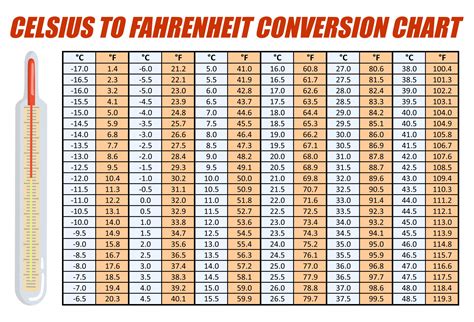Convert 70 Degrees C To Fahrenheit
Kalali
Mar 28, 2025 · 4 min read

Table of Contents
Converting 70 Degrees Celsius to Fahrenheit: A Comprehensive Guide
The conversion of temperature scales is a common task in various fields, from cooking and meteorology to engineering and scientific research. One frequently encountered conversion is from Celsius (°C) to Fahrenheit (°F). This article provides a detailed explanation of how to convert 70 degrees Celsius to Fahrenheit, covering the formula, the calculation process, practical applications, and some frequently asked questions.
Understanding Celsius and Fahrenheit Scales
Before diving into the conversion, let's briefly understand the two scales involved:
-
Celsius (°C): Also known as the centigrade scale, Celsius is a metric temperature scale where 0°C represents the freezing point of water, and 100°C represents the boiling point of water at standard atmospheric pressure.
-
Fahrenheit (°F): This scale is primarily used in the United States. Water freezes at 32°F and boils at 212°F under standard atmospheric pressure.
The difference in the scales lies in the size of their degree increments and their zero points. This difference necessitates a conversion formula to accurately translate temperatures between the two.
The Conversion Formula: Celsius to Fahrenheit
The fundamental formula for converting Celsius to Fahrenheit is:
°F = (°C × 9/5) + 32
Where:
- °F represents the temperature in Fahrenheit.
- °C represents the temperature in Celsius.
Converting 70°C to Fahrenheit: A Step-by-Step Guide
Let's apply the formula to convert 70°C to Fahrenheit:
-
Substitute the Celsius value: Replace °C with 70 in the formula:
°F = (70 × 9/5) + 32
-
Perform the multiplication: Multiply 70 by 9/5:
°F = (126) + 32
-
Add 32: Add 32 to the result:
°F = 158
Therefore, 70°C is equal to 158°F.
Practical Applications of Celsius to Fahrenheit Conversion
The ability to convert between Celsius and Fahrenheit is crucial in many real-world situations:
-
Cooking and Baking: Recipes often specify temperatures in either Celsius or Fahrenheit. Accurate conversion ensures the correct cooking temperature is used. Imagine baking a cake – a slight temperature difference could impact the final outcome significantly.
-
Weather Forecasting: International weather reports might display temperatures in Celsius, while local reports in the US use Fahrenheit. Conversion allows for easy understanding of weather conditions regardless of the reporting scale.
-
Science and Engineering: Scientists and engineers often work with both temperature scales, requiring conversions for data analysis, equipment calibration, and experimental design. For instance, precise temperature control is paramount in many scientific experiments.
-
Healthcare: Medical devices and thermometers might display temperatures in Celsius or Fahrenheit depending on the region and device specifications. Converting between scales ensures clear communication and accurate diagnosis.
-
International Travel: Understanding temperature conversions is helpful when planning trips to countries that use different temperature scales. Packing appropriate clothing requires knowing what Fahrenheit equivalents mean in Celsius.
Beyond the Basic Conversion: Understanding the Implications
While the formula is straightforward, it's important to understand the implications of the conversion:
-
Nonlinear Relationship: The relationship between Celsius and Fahrenheit is not linear. A change of 1°C does not equate to a change of 1°F. The 9/5 factor reflects the differing sizes of the degree increments.
-
Absolute Zero: Both scales have different zero points. Absolute zero, the theoretical lowest possible temperature, is -273.15°C and -459.67°F. This emphasizes the fundamental difference in the construction of the two scales.
-
Accuracy and Significant Figures: When performing the conversion, remember to maintain the appropriate number of significant figures to avoid introducing errors in your calculations. The accuracy of your final answer depends on the precision of the initial Celsius measurement.
Frequently Asked Questions (FAQs)
Q1: Can I convert Fahrenheit to Celsius?
Yes, absolutely! The reverse conversion formula is:
°C = (°F - 32) × 5/9
Q2: Are there online converters available?
Yes, numerous websites and apps offer instant Celsius to Fahrenheit conversion tools. These tools can be very helpful for quick conversions.
Q3: Why are two different scales used?
Historically, different scales were developed independently. The continued use of both reflects practical considerations and established norms within specific regions.
Q4: What about other temperature scales (Kelvin, Rankine)?
Beyond Celsius and Fahrenheit, other temperature scales exist, including the Kelvin and Rankine scales, which are absolute temperature scales (meaning they start at absolute zero). Conversions between these scales require different formulas.
Q5: How do I ensure accuracy in my calculations?
Always double-check your work, especially when dealing with crucial applications. Using a calculator and following the formula precisely will minimize errors.
Conclusion: Mastering Celsius to Fahrenheit Conversions
Converting 70°C to 158°F is a relatively simple process using the standard formula. However, understanding the underlying principles of the Celsius and Fahrenheit scales and the implications of the conversion is crucial for accurate and meaningful applications across various fields. By grasping the formula and understanding its context, you’ll be well-equipped to handle temperature conversions confidently and effectively. Remember to always double-check your calculations, especially in situations where precision is critical.
Latest Posts
Latest Posts
-
Convert 1 1 2 Oz To Cups
Mar 31, 2025
-
How Many Ounces Is A Quarter Of A Pound
Mar 31, 2025
-
The Right Shoulder Is And To The Umbilical Region
Mar 31, 2025
-
How Many Feet Is 190 In
Mar 31, 2025
-
Cuanto Es Un Litro En Oz
Mar 31, 2025
Related Post
Thank you for visiting our website which covers about Convert 70 Degrees C To Fahrenheit . We hope the information provided has been useful to you. Feel free to contact us if you have any questions or need further assistance. See you next time and don't miss to bookmark.
